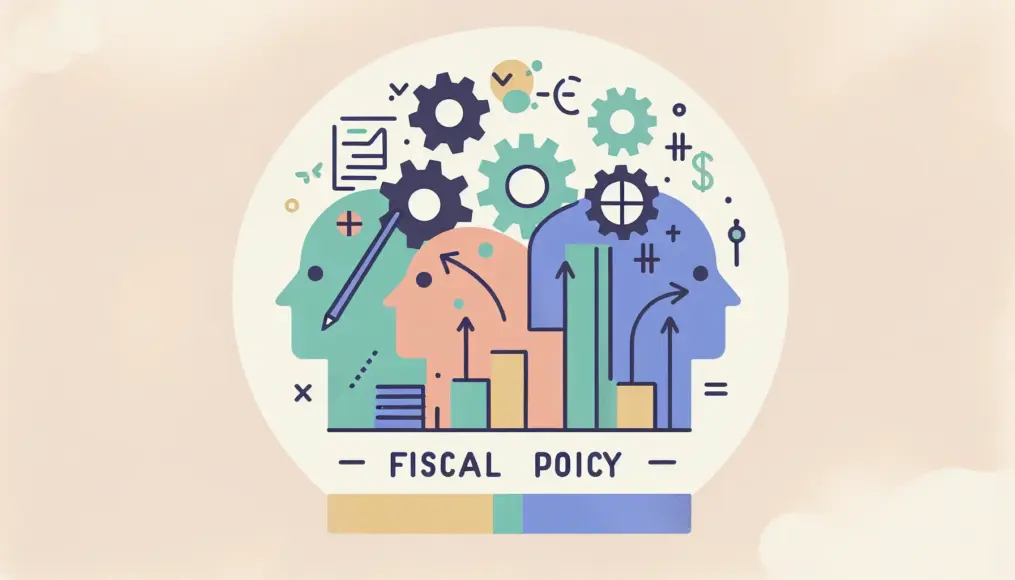Japan’s fiscal policy has undergone significant changes from the post-war reconstruction era to the present day. The policies implemented to support economic growth have had mixed results—some achieving success while others have faced challenges. Contemporary issues such as an aging population and fiscal deficits are critical themes that will shape future policy-making. Learning from past successes and failures is essential as we consider the future of Japan’s fiscal policy.
Building a sustainable fiscal model for the future requires active citizen participation. When each of us engages in the policy-making process, we can forge a path toward a better society. This article delves into the history of Japan’s fiscal policy and its prospects moving forward.
- Reflecting on the historical background of Japan’s fiscal policy
- Examining the challenges faced by modern fiscal policies
- Seeking insights for future policy-making from successful case studies
Historical Background of Japan’s Fiscal Policy
Japan’s fiscal policy has undergone significant changes from the post-war recovery period to the present day, evolving with the times. In the chaotic aftermath of World War II, there was a pressing need for swift and effective fiscal measures to support the livelihoods of the citizens. While policies aimed at achieving economic growth have been crucial for stabilizing and promoting growth, maintaining fiscal soundness has also emerged as a vital challenge. This chapter reflects on the evolution of fiscal policies since the war and delves into the relationship between economic growth and fiscal health.
Evolution of Post-War Fiscal Policy
In the wake of the war, Japan initially implemented fiscal policies aimed at reconstruction. During this period, the government focused on creating jobs and revitalizing the economy through public works projects. With assistance from the United States, significant efforts were made to enhance infrastructure and foster industrial development. As a result, Japan experienced rapid economic growth from the 1950s to the 1960s.
However, this rapid growth was accompanied by challenges such as rising fiscal deficits and inflation. In response, the government undertook tax reforms and re-evaluated expenditures to gradually aim for fiscal soundness. These policies played a crucial role in laying the groundwork for the future of the Japanese economy.
- Fiscal policies aimed at post-war recovery were implemented
- Public works contributed to job creation and economic revitalization
- Fiscal deficits and inflation emerged as significant challenges
The Relationship Between Economic Growth and Fiscal Policy
Economic growth and fiscal policy are closely intertwined. As the economy grows, tax revenues increase, enabling the government to provide more public services and improve infrastructure. This, in turn, raises the standard of living for citizens and stabilizes society as a whole. Conversely, when growth slows, tax revenues decline, leading to tighter fiscal conditions.
Japan’s fiscal policies have shown a flexible response to economic trends. Notably, during periods of economic downturn, the government has employed fiscal stimulus measures to spur recovery. This underscores the importance of shaping policies based on past experiences.
- The correlation between economic growth and tax revenue is significant
- A slowdown in growth leads to tougher fiscal conditions
- Policy formation based on past experiences is crucial
Challenges of Modern Fiscal Policy
In contemporary Japan, fiscal policy is grappling with a range of challenges. Among these, the impacts of a declining birthrate and an aging population, coupled with the current state of fiscal deficits, are particularly severe. The aging population leads to increased social security costs while simultaneously reducing the labor force. This creates a situation where tax revenues are dwindling, making it increasingly difficult to maintain public services. In this section, we will delve into how the declining birthrate and aging population impact fiscal policy, examine the current state of fiscal deficits, and explore potential solutions.
The Impact of the Declining Birthrate and Aging Population
The declining birthrate and aging population pose significant challenges for Japan’s fiscal policy. As birth rates continue to fall, the labor force is projected to shrink in the future, resulting in a heavier burden on the social security system. This demographic shift is expected to increase costs related to pensions, healthcare, and elder care, severely affecting government finances.
Additionally, with a growing elderly population, healthcare and elder care expenses are rapidly escalating, raising concerns about the sustainability of fiscal health. Addressing these issues requires a broad range of measures, including revitalizing the labor market and considering policies for accepting immigrants. A collective effort from the entire nation is essential in tackling these challenges.
- The declining birthrate increases social security costs
- A shrinking labor force impacts tax revenue
- A wide range of measures is necessary
Current State of Fiscal Deficits and Solutions
Currently, Japan’s fiscal deficit is in a serious state. Prolonged deficits have diminished the country’s credibility and raised concerns about future economic growth. The expansion of deficits, especially in a context of sluggish economic growth, threatens sustainable fiscal management.
To improve this situation, a reevaluation of expenditures and efforts to increase tax revenues are essential. Specifically, this may involve cutting unnecessary spending, raising consumption taxes, and exploring new tax systems. Implementing these measures is crucial for restoring fiscal health.

If you found this article interesting, check out our piece on “What is Fiscal Reconstruction? Exploring Japan’s Challenges and Solutions.” This article delves into specific methods for fiscal reconstruction and current issues, deepening your understanding of fiscal policy.
- Japan’s fiscal deficit is in a serious state
- Sluggish economic growth is contributing to the expansion of deficits
- Reevaluation of expenditures and an increase in tax revenues are necessary
Successful Examples of Fiscal Policy
Japan has several historical examples of successful fiscal policies that have significantly contributed to economic growth and social stability. Analyzing how specific policies have achieved their effects provides important lessons for future fiscal policy formulation. In this chapter, we will reflect on these past successful fiscal policies and consider the lessons we can learn from them.
Notable Successful Policies from the Past
One prime example of successful fiscal policy that supported Japan’s economic growth is the public investment policy implemented during the high economic growth period of the 1960s. During this time, the government focused on infrastructure development, enhancing transportation networks and energy supply foundations, which stimulated economic activity. This policy not only encouraged private sector investment but also led to job creation.
In addition, during the early 1990s recession, the government increased public works as a stimulus measure, implementing strategies aimed at revitalizing the economy. Although these policies carried a temporary fiscal burden, they contributed to long-term economic growth.
- The public investment policy of the 1960s supported economic growth
- Infrastructure development stimulated private investment
- The stimulus measures of the 1990s contributed to economic recovery
Lessons Learned from Successful Examples
The lessons gleaned from past successful fiscal policies are crucial for future policy development. First and foremost, it is clear that timely fiscal action can contribute to economic stability. Additionally, effective utilization of public investment has been shown to not only promote economic growth but also enhance the standard of living for citizens.
Furthermore, transparency in policy implementation is essential. When citizens understand and are convinced of the objectives and processes behind policies, the acceptance and effectiveness of these policies are likely to improve. Formulating policies based on these lessons will be indispensable for the future of the Japanese economy.
- The importance of timely fiscal action
- Effective use of public investment contributes to economic growth
- Transparency in policies promotes public understanding and acceptance
Rethinking Future Fiscal Policy
When considering future fiscal policy, establishing a sustainable financial model is a crucial theme that cannot be overlooked. Japan faces significant challenges such as a declining birthrate and an aging population, which necessitate long-term policy development. Additionally, citizen participation will be an essential component of future fiscal policy. Involving citizens in the policy-making process can lead to more transparent and trustworthy financial management. This chapter delves into the construction of sustainable fiscal models and the importance of citizen engagement.
Building a Sustainable Financial Model
Creating a sustainable financial model starts with implementing measures to maintain fiscal health. Key strategies include streamlining expenditures and stabilizing tax revenues. It’s critical to strike a balance between reducing unnecessary spending and maintaining essential public services. This approach ensures that future generations are not burdened by financial obligations.
Moreover, investing in renewable energy and environmental initiatives is also part of a sustainable financial model. This allows for policies that promote economic growth while remaining mindful of environmental impacts. Japan’s future fiscal policy must prioritize sustainability.
- Measures to maintain fiscal health are essential
- Streamlining expenditures and stabilizing tax revenues are key
- Policies must consider environmental impacts
The Importance of Citizen Participation in Policy-Making
Citizen participation is becoming an essential element in shaping future fiscal policy. When citizens engage in the policy-making process, their understanding and acceptance of policies improve. This engagement is vital for enhancing the effectiveness of policies once they are implemented. Furthermore, reflecting citizens’ opinions and needs can lead to more impactful and practical policies.
Additionally, citizen involvement serves as a means to restore trust in politics. A transparent policy-making process is crucial for gaining the public’s trust. This transparency makes it easier to garner cooperation in implementing policies, ultimately leading to stable financial management.

If you found this article interesting, you might also want to check out “Turning the Challenges of an Aging Population into Opportunities! Rethinking the Future from a New Perspective.” This article offers new approaches and policy suggestions related to Japan’s aging population, providing valuable insights for building a better future.
- Citizen participation is a crucial factor in policy-making
- Enhances public understanding and acceptance of policies
- A transparent policy-making process is key to restoring trust
Conclusion
In this article, we explored the history of Japan’s fiscal policy, its contemporary challenges, and future prospects. Starting from the post-war reconstruction era, we reflected on successful examples that contributed to economic growth, allowing us to draw important lessons for future policy formation. We also emphasized the need for a sustainable fiscal model and the importance of civic engagement in addressing modern challenges such as declining birth rates and fiscal deficits.
As we think about the future of fiscal policy, it is crucial to leverage these insights to develop more effective and transparent policies. When each citizen becomes involved in the decision-making process, it can significantly contribute to building a better society.
- Japan’s fiscal policy has undergone significant historical changes
- Modern challenges include declining birth rates and fiscal deficits
- Sustainable fiscal models and civic participation are key to the future
Why not take this opportunity to think about the future of fiscal policy? We’d love to hear your thoughts and feedback in the comments. Your voice can help guide the next steps forward.



Comment